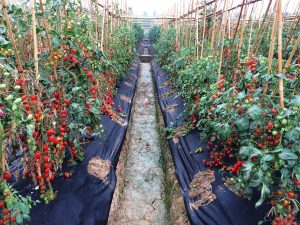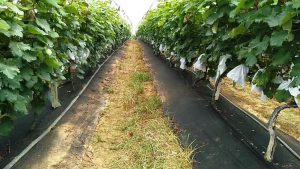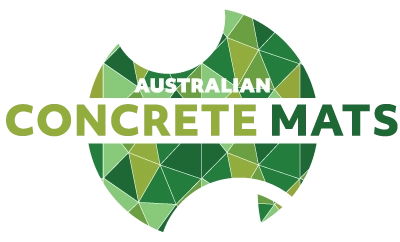Horticultural fabrics optimise the productivity of crops, gardens and greenhouses. Their breathable and permeable properties make them ideal for weed control, frost protection, erosion control, drainage, landscaping and soil stabilization. Horticultural fabrics also reduce the incidence of rotten fruit and damage caused by high temperatures compared to traditional polyethene liners. The protective nature of nonwoven horticultural fabrics reduces the need for pesticides and manual labour.
The use of high strength and durable nonwoven crop covers increases yields and improves the quality of crops. Lightweight and flexible nonwoven agricultural fabrics create a microclimate in which the heat and humidity are controlled.
Made from thermally embossed polypropylene, nonwoven horticultural fabrics are fully biodegradable and can be produced in a variety of colours, textures, and thicknesses. Our range includes 40gsm weed control matting for ground crops such as strawberries, tomatoes, chillies. 55gsm weed control mat for trellised crops such as kiwifruit and grapes. 80gsm fabric for fruit trees such as peaches, apples, figs and herbs. Our breathable fruit protection bags protect fruit from wind and pest damage, reduce pesticide residues and allow uniform light transmission to achieve an attractive product.
HortiFabric is available in a range of widths from 0.8m to 1.6m.

Nonwoven weed control mat for newly planted grapevines

Use of nonwoven horticultural fabrics to suppress weeds in a glasshouse tomato crop

Protecting grapes with breathable nonwoven bags

Nonwoven horticultural fabric suppressing weeds in a fig nursery
Benefits of nonwoven horticultural fabrics:
- Suppress weed growth
- Reduce soil erosion
- Reduce pest damage and plant disease
- Encourage worm and microbial activity in the soil
- Allow liquid or slow release fertilisers to pass through the fabric
- Protect against frost and insects
- Spaces between the nonwoven fibres allow air and water to reach the crop but are small enough to keep out insects
- Crops develop earlier, yields are higher and the growing season can be extended at both ends
Applications for nonwoven horticultural fabrics
- Crop covers
- Plant protection
- Seed blankets
- Weed control fabrics
- Greenhouse shading
- Root control bags
- Biodegradable plant pots
- Capillary matting
- Landscape fabrics












